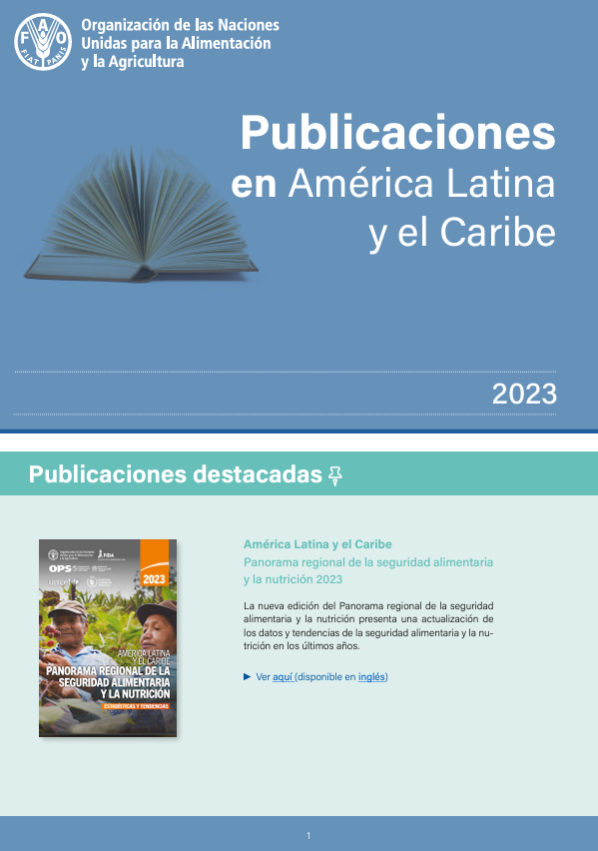Publications

A review of school feeding programmes in the Caribbean Community
04/10/2021
This review provides a snapshot of the state-of-art of School Feeding Programmes in 14 of the 15 CARICOM Member States. It provides an overview of the different models of school feeding programmes that currently exist in the Caribbean, challenges faced and recommendations for improvement.

Manual of food portion quantification – Saint Kitts and Nevis
04/10/2021
The Manual of Food Portion Quantification; Saint Kitts and Nevis was developed to assist individuals in recognizing and reporting their food and beverage intakes accurately during the National Individual Food Consumption Survey in SKN conducted in 2020.
![cb6536en_200[1]](/images/rlclibraries/publications/cb6536en_200-1-.jpg?sfvrsn=56408bd6_2)
Send Lessons learned and public policy recommendations on adaptation to climate change in artisanal fisheries and small-scale aquaculture in Chile.
01/10/2021
This document is part of the project “Strengthening the adaptive capacity to climate change in the fisheries and aquaculture sector of Chile”, executed by the Undersecretariat of Fisheries and Aquaculture and the Ministry of the Environment, and implemented by the Food and Agriculture Organization of the United Nations, with funding from the Global Environment Facility.

Wholesale markets: Action against COVID-19 Bulletin N° 7
24/08/2021
The circular economy in wholesale markets reduces production costs, generates new business models, and can play a crucial role in reducing food prices and food security for the population. This publication reviews technical information on the circular economy and post-pandemic recovery, along with interviews with Rodrigo Perpétuo and Gustavo Chavarría Gamboa and survey results on the circular economy in wholesale markets.
![cb2369en_200[1]](/images/rlclibraries/publications/cb2369en_200-1-.jpg?sfvrsn=83245d42_2)
Combating obesity and overweight: Private sector initiatives in Latin America and the Caribbean
20/08/2021
The value chain that provides for healthy eating is essential in promoting and accessing an adequate diet. Producers, distributors and consumers play an important role in promoting the consumption of healthy foods, which is reflected in various initiatives that private and civil society have led in Latin American countries.

Health on the table – A consumer advocacy perspective on reducing overweight and obesity in Latin America
16/08/2021
The health of global consumers has suffered greatly from the growing problem of overweight and obesity. In Latin America and the Caribbean, overweight affects 59.5 percent of adults, more than 20 percentage points above the world average, while almost a quarter of all adults are obese, well above the world average of 13.1 percent.

FAO Gender Regional Strategy for Latin America and the Caribbean 2019–2023
28/07/2021
The Gender Strategy proposes to deepen the analysis of the initiatives that achieve changes and - structural transformations - of the unequal relations, emphasizing in the monitoring of the SDGs and the indicators under the mandate of the FAO.

